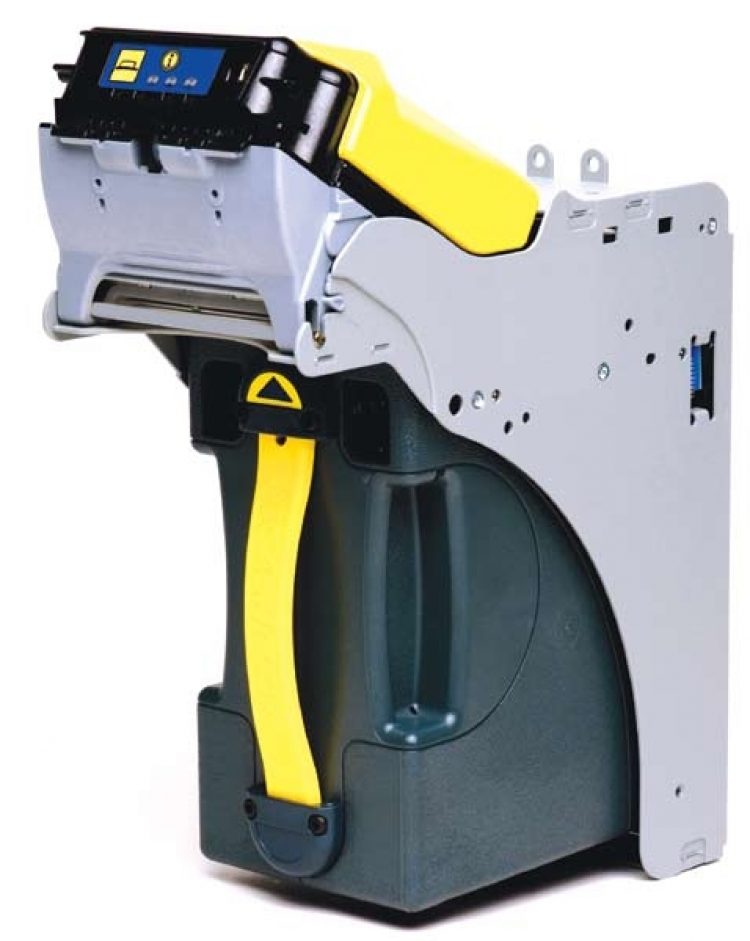shows off its latest and greatest bill acceptor and integrated soft count system
The growing integration of bill acceptance and soft count processes in the digitally networked management of casinos was graphically illustrated at MEI’s booth during the Global Gaming Expo (G2E) in Las Vegas.
Among the products on display were the company’s latest bill acceptor, the SC Advance™, and the radio frequency identification (RFID)-enabled EASITRAX® Soft Count system.
“In developing MEI SC Advance, we took our current CASHFLOW® SC bill acceptor and we improved some of the features, including acceptance rate and security, to bring extra value to the operators,” says JeanMarie Decker, Marketing Manager.
“When someone wants to integrate SC Advance into their casino, they don’t have to buy all new products because SC Advance can work side by side with CASHFLOW SC. All you have to do is replace the head. It can be interchanged throughout your units,” she explains.
Standing out
In a competitive market with a number of bill acceptor suppliers vying for casino operators’ attention, MEI stands out. It has the world’s largest installed base of unattended payment systems, handling more than two billion transactions per week in more than 100 countries. MEI also hit on the idea of what it calls ‘value added trials’ or ‘VAT’ for short. This is where the company invites an operator to run a trial of MEI’s note validator product in a bank of six to 12 slot machines alongside a bank of slot machines using the casino’s existing bill validator system.
“We can talk ‘til we’re blue in the face about the advantages of SC Advance, but what operators really want to see is more cash in the cash box,” says Andy Reichlin, Director of Marketing.
When VAT tests were done on another MEI product, the CASHFLOW SC 83, at the Regency Casino Thessaloniki in Greece a few years back, it led to the casino management specifying MEI in all its new slot machines.
“We believe there’s really three basic things that lead to more cash in the cashbox. First, what’s your acceptance rate? It’s extremely frustrating as a casino customer if your bill doesn’t get accepted,” states Mr Reichlin.
“Second, what’s your jam rate? Because if the slot machine goes out of service you can’t take any notes. Third, what’s your security? Are you going to take real notes? You need to let the good ones in and keep the bad ones out. If you do those three things well, plus fourth, ensure you are a low maintenance product on the operations side of the casino, then that’s what really counts with a bill validator.”
Asian sales
Although MEI hasn’t conducted any of its VAT trials in Asia because of jurisdictional rules, the company has had considerable sales success there.
“Asia’s a big market for us,” says Mr Reichlin.
“We have a good presence in Macau, and we won orders in both Singapore properties last year. We’re also in Resorts World Manila in the Philippines.
“We have historically done very well with Sands, so we have high hopes for Cotai 5 and 6. Historically, we have also done well with the MGM properties. And we are now making some good progress with SJM in Macau.”
EASITRAX
MEI says its EASITRAX Soft Count system, which complements its bill validator systems, offers the prospect of rapid return on investment because of the time and labour its saves on the drop box process.
“The way it works is that there’s an RFID tag in the bill acceptor cash box,” states Ms Decker.
“The information is taken from the bill acceptor head and written to the RFID tag. So when the drop crews come and take the cash box out, filled with money, they go into the soft count room, and put the bill acceptor on the EASITRAX reader base. The information from the RFID tag then goes into a database and can be networked to the casino. If an operator owns several different properties, they can access all of the information on one network. Information from the RFID tag is programmed into many different reports so the casino can find out what their acceptance rate was, and if any of their cash boxes were full, meaning they would have to adjust the time between drops.”
“We’re saving 20 to 30 seconds per drop per cash box,” adds Andy Reichlin.
“So if you think about how many hours that adds up to given the daily drop routine, operators can get a return
on investment within a year just based on labour savings alone.”































